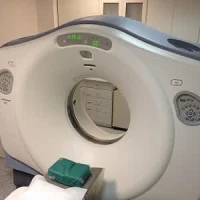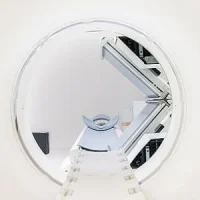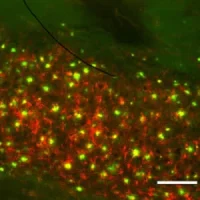Cerebral venous thrombosis (CVT) is a rare disease, and with poor prognosis. Computed tomography (CT) and magnetic resonance imaging (MRI) are the most commonly used image modalities for patients with non-specific neurologic symptoms. A new meta-analysis assessed the accuracy of CT and MRI in the differential diagnosis of CVT and cerebral venous sinus thrombosis (CVST).
Based on their analyses, the authors conclude that "both CT and MRI have a high level of diagnostic accuracy in the differential diagnosis of CVT and CVST, independent of stage, target for analysis or analysis methods. They could be chosen as alternative suboptimal gold standards for diagnosing CVT and CVST, especially in emergency."
Cerebral venous thrombosis accounts for 1 to 2 percent of all strokes. Timely and accurate diagnosis is very important as delayed diagnosis may lead to permanent disability or even death. However, in many cases, proper diagnosis and timely treatments could not be reached due to the non-specific and varied clinical symptoms.
Although the current gold standard for diagnosing CVT or CVST is contrast-enhanced magnetic resonance venography (CEMRV) or computerised tomography venography (CTV), only a small portion of patients suspected with CVT received the examinations. Eventually, this could lead to delayed diagnosis of many cases. Moreover, the patients receiving CEMRV or CTV examinations bore the risks of radiation exposure, contrast agent allergy or renal toxicity.
CT and MRI have been widely reported in diagnosing CVT and CVST. However, varied sensitivity and specificity were documented across different studies making it difficult to apply CT and MRI in clinical use. Researchers retrieved 48 eligible comparative studies and conducted a meta-analysis to systematically assess the performance of CT and MRI in diagnosing CVT and CVST.
The pooled sensitivity for CT-CVT/CT-CVST groups is 0.79 (95% confidence interval [CI]: 0.76, 0.82)/0.81(95% CI: 0.78, 0.84), and pooled specificity is 0.90 (95% CI: 0.89, 0.91)/0.89 (0.88, 0.91), with an area under the curve (AUC) for the summary receiver operating characteristic (SROC) of 0.9314/0.9161, respectively. No significant heterogeneity and publication bias was observed across each study. For MRI-CVT/MRI-CVST, the pooled sensitivity is 0.82 (95% CI: 0.78, 0.85)/0.80 (95% CI: 0.76, 0.83), and pooled specificity is 0.92 (95% CI: 0.91, 0.94)/0.91(0.89, 0.92), with an AUC for the SROC of 0.9221/0.9273, respectively.
"In this meta-analysis, different stages of CVT were separately assessed. The results from two groups both showed that CT displayed a good performance in the differential diagnosis of CVT," the authors note. "Although there was no statistical difference between these two groups, the diagnosis of CT for acute CVT displayed better sensitivity while higher specificity was shown for the acute and/or sub-acute group."
Regarding MRI, the results of sub-group analysis demonstrated that 3.0T MRI scans own higher diagnostic accuracy than 1.5T MRI in the diagnosis of CVT.
According to the authors, both imaging techniques have their own advantages and disadvantages. "CT in acute stage seemed to display higher sensitivity while the MRI displayed higher specificity," they say, adding that the results should be interpreted cautiously due to potential heterogeneity across each study.
Source: Thrombosis and Haemostasis
Image Credit: Pixabay
References:
Xu W et al. (2018) The Performance of CT versus MRI in the Differential Diagnosis of Cerebral Venous Thrombosis. Thromb Haemost. 2018 Apr 25. doi: 10.1055/s-0038-1642636. [Epub ahead of print]
Latest Articles
CT, MRI, cerebral venous thrombosis, CVT
Cerebral venous thrombosis (CVT) is a rare disease, and with poor prognosis. Computed tomography (CT) and magnetic resonance imaging (MRI) are the most commonly used image modalities for patients with non-specific neurologic symptoms. A new meta-analysis










